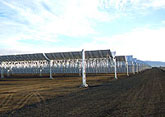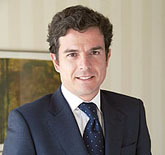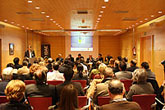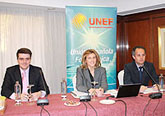This week Microsoft is at the Global Climate Action Summit sharing its vision of sustainable future, focused on harnessing the power of technology to fight climate change and build a better future, and is also wide spreading the progress that can be achieved by making good use of technology.
Microsoft has presented new tools, different agreements and the results of five pilot projects that are already reducing emissions from different industries and boosting environmental research, in order for the energy and construction sectors to address a less-emissions future.
Microsoft tools and results
The first is a new open source tool to create, use and boost low-carbon emissions building materials. At the moment it is highly challenging to identify these materials since the data are difficult to process or cannot be processed with the necessary precision. Microsoft will use this technology in the remodeling of its Campus in Seattle. According to the company’s estimates, a clean building in this city emits approximately half of the carbon gas that the average, so this could have a significant impact on the reduction of carbon emissions in the Campus and, in general, in the entire environment.
Secondly, the results of a «factory of the future» and the deployment of solar panels in one of Microsoft’s largest suppliers in China have been presented: the company has partnered with the team responsible for the management of its supplier to develop and install an energy-smart building solution to monitor and address problems as they arise, saving energy and costs. On the other hand, in its offices the installation of solar panels has been financed, resulting in more than 250,000 kilowatts saved every hour in the last fiscal year.
The third project is about the successful pilot program of an energy storage battery with interactive network connection: a battery that is normally situated in the data center is used as a backup system. It is connected to the network to receive signals about when energy should be received, stored and discharged to support its reliability and the integration of renewable energies. This pilot program is very useful, since it has demonstrated a potential to quickly scale it up to other storage solutions, and allow data centers to buffer the effects of unforeseen events due to wind and sun.
Fourth, Microsoft has presented the results of the AI for Earth program: Since the program was introduced last year, its results have increased by up to 200 percent. It offers support to 137 beneficiaries in more than 40 countries around the world, and the number of large-scale projects has doubled. It has also allowed many people who are not part of the program, to benefit from this work, by processing more than 10 billion pixels of map images in 10 minutes and for less than 50 dollars.
The fifth project is the new online training module for sustainability on LinkedIn, Sustainable Learning Path: LinkedIn is offering new training courses for people around the world to learn and acquire job skills that allow them to participate in a clean energy economy and in the low-carbon emissions future. The training module, Sustanaible Learning Path, offers six hours of content created by experts, with courses that include an overview of sustainability strategies and basic concepts around LEED accreditation and sustainable design.
For Microsoft, «these are only samples of the potential of technology to improve action against climate change, the result of decades of work and advances in sustainability within Microsoft’s activities. Among these advances worth to mention are the fact of the company operating at 100% carbon-free since 2012, acquiring more than 1 gigawatt of renewable energy on three continents, or our commitment to reducing our carbon footprint by 75% before 2030, among others initiatives. However, we know that this is not enough. As a leading technology company, we have a responsibility and a great opportunity to help change the course of our planet. «
Carlos Sánchez Criado
Publicista por la Universidad Complutense. Director comercial de publicaciones técnicas del sector de la energía durante doce años. Director de Energy News Events, S.L. desde 2012 difundiendo información en Energynews.es, movilidadelectrica.com e hidrogeno-verde.es. Y por supuesto, organizando eventos como VEM, la Feria del Vehículo Eléctrico de Madrid.



























